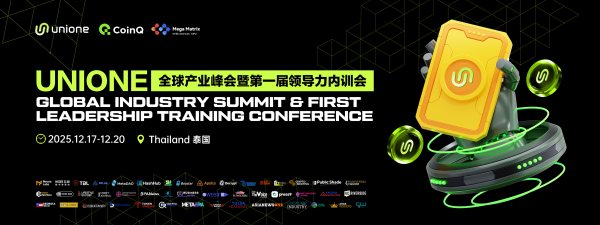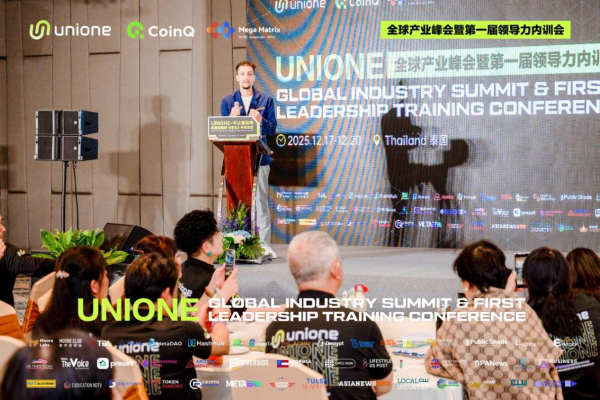Press Release
CNT uses blockchain technology to help “carbon neutralization”
At a critical moment when environmental problems are increasingly affecting human survival, the world recognizes that achieving “carbon neutralization” is a necessary stage to slow down global warming. Statistics show that more than 120 countries and two-thirds of the economies have joined the great transformation of “carbon neutrality”.

At present, carbon emission trading is considered as an effective tool to deal with climate change with the market mechanism. Through the carbon dioxide emission quota of the main greenhouse gas, government departments can control the total amount of carbon emission quota, so that the emission control enterprises incorporated into the market are limited by the carbon emission quota, and then through the introduction of the trading mechanism, the optimal allocation of resources can be achieved. Therefore, many countries have initiated the eco chain alliance to focus on the application of blockchain in key application scenarios such as carbon trading ecological network. It can be said that blockchain technology has great application value in helping to achieve the goal of carbon neutralization in the future.
CNT foundation is establishing carbon trading agreement, a public blockchain system focusing on carbon neutrality and carbon emissions trading. CNT Foundation believes that blockchain technology can better solve the basic contradictions in the carbon emission market. Similarly, carbon emission trading and carbon offset can alleviate the negative problems brought to the external environment by the blockchain POW consensus mechanism.
Through blockchain technology, CNT can establish a traceability application covering the whole supply chain and fully evaluate the carbon footprint of suppliers, so as to judge whether it can be incorporated into its own supply chain system. Enterprises in the supply chain can also collect and analyze their carbon emission performance through traceability data to reduce carbon emission, improve energy efficiency and optimize business to achieve carbon neutralization.

The application of blockchain traceability can also improve the transparency of industrial chain and supply chain. With transparent and reliable data, enterprises can make effective carbon disclosure and formulate corresponding carbon compensation schemes, so as to realize the real carbon neutral supply chain and negative carbon supply chain.
Using blockchain and privacy computing technology, information can be verified but invisible. Through the private key signature authorization of the data owner, the data access right can be temporarily opened to specific potential partners, upstream and downstream enterprises and third-party regulators to verify carbon emission related data. All quantifiable carbon emission data can be shared safely in this way.

Once the concerns about enterprise data security are eliminated, carbon emission data can be circulated and shared at the industrial level, and the value of data can be truly unlocked. This will advance the process of achieving the goal of carbon neutrality.
If we want to reduce greenhouse emissions to avoid two degrees of temperature rise and even worse climate change, we need to make fundamental technological innovation. Although emission trading markets are potential solutions, they must be improved in order to achieve a certain degree of meaningful emission reduction in market efficiency and scale. Although blockchain technology can theoretically improve these markets, suitable networks that can promote this market transformation have not been developed. In addition, the blockchain network (the most popular blockchain in the past) does not have a design to reduce the impact on the environment. Therefore, in the spirit of decentralization and sustainability, carbon trading agreement has developed into a blockchain carbon sink trading network with carbon neutralization as the core.
By enabling the carbon trading agreement, the customers on the network will contribute to their carbon neutralization through their transaction fees. The transaction fees are concentrated to purchase real and verifiable carbon sink assets, and then offset the carbon trace of the carbon trading agreement, so as to ensure their de neutralization, carbon trading, carbon neutralization and carbon asset storage. The process is transparent and supervised by various stakeholders in community governance, including CNT holders, verifier nodes and elected committee members, who are encouraged to maintain the security and reliability of the network.

Realizing “carbon neutralization” is one of the major trends in the future. As a new generation of subversive core technology after steam engine, power and Internet, blockchain’s unique personality will play a key role in the carbon trading market. Through the application of blockchain technology, the scale of the global carbon trading market may exceed trillion dollars in the near future. It can be said that there is still a lot of room for development.
About Author
Disclaimer: The views, suggestions, and opinions expressed here are the sole responsibility of the experts. No Digi Observer journalist was involved in the writing and production of this article.
Press Release
UniOne Global Industry Summit and the First Leadership Training Conference have been successfully concluded
China,Hong Kong,Dec.20th.Responding to the Era of Global Uncertainty with Industrial Consensus and Organizational Capacity

In the context of ongoing reshaping of the global industrial structure and accelerated evolution of organizational forms, truly valuable conferences have long moved beyond mere information display or short-term incentives, instead focusing on strategic direction-setting, system development, and consensus-building.
The UniOne Global Industry Summit and the inaugural Leadership Training Program represent a systematic and in-depth dialogue centered on this core objective.
During the opening session, UniLabs ‘Chief Consultant delivered a keynote address, providing a systematic analysis of UniOne’s current development stage from the perspectives of global industrial cycles, organizational evolution, and long-termism. The speech not only reviewed the evolving trends in the global economy and industrial structure but also highlighted UniOne’s strategic path and core decisions within this cycle, establishing a clear and robust strategic foundation for the entire conference.

During the session, the co-founder of Uni Labs delivered a keynote presentation on UNIONE’s industrial strategy and development roadmap. The presentation provided a comprehensive overview of UniOne’s industrial framework, core business focus, and phased objectives. It not only covered the current priority sectors but also outlined the development pace and priorities for the coming period, enabling attendees to grasp UniOne’s long-term strategic vision holistically rather than focusing narrowly on individual businesses or short-term opportunities.
On the topic of industrial layout, the conference elaborated in depth on UniOne’s holistic ecosystem framework and development strategy, emphasizing diversified collaboration over singular reliance. Through clear industrial division of labor and collaborative mechanisms, it aims to build a systemic ecosystem with risk resilience and continuous evolution capabilities. This discussion not only addresses the question of’ what to do, ‘but also reveals the fundamental rationale behind’ why to do it.’
The conference’s economic model discussions focused on the long-term rationality of value creation and distribution mechanisms, systematically analyzing the interplay between participant roles, incentive structures, and ecosystem stability. Through rational and transparent analysis, it emphasized that sustainable development must be grounded in tangible value and clear rules, rather than relying on short-term emotions or external stimuli. This section provided participants with a critical framework to understand the overall functioning of the ecosystem.
The meeting expanded its focus to innovation and foundational capacity building, with in-depth discussions on innovation incubation, technical support, and organizational empowerment. Through a systematic analysis of the innovation ecosystem, it was emphasized that UniOne prioritizes not only business expansion but also the continuous development of core competencies and talent systems, ensuring stable support for the long-term sustainability of its ecosystem.
The conference will shift its focus from “individual capabilities” to “organizational synergy” in leadership and organizational development, emphasizing that leadership is fundamentally about building trust, fostering consensus, and continuously amplifying team effectiveness. Through sharing real-world cases and practical experiences, it explores how to build teams with execution, cohesion, and long-term resilience within multicultural and complex organizational structures.
The conference transcended isolated discussions of specific topics, instead weaving together industrial, model, organizational, and leadership dimensions to forge a cohesive cognitive framework. This approach enabled participants to gain a higher-dimensional understanding of their roles and future trajectories.

The UniOne Global Industry Summit and the inaugural Leadership Training Program wasn’t a one-time conclusion presentation, but rather a collaborative exploration of long-term value.
It does not convey the path to quick success, but how to build the ability and consensus of certainty in the uncertain times.
This is the core and the most long-term value of the conference.
Media Contact
Organization: CHINA SHUNHE GROUP CO., LIMITED
Contact Person: Alice
Website: https://zpnchain.io/
Email: Send Email
Address:RM 21 UNIT A 11/F TIN WUI IND BLDG NO 3 HING WONG ST TUEN MUN NT HONG KONG
Country:China
Release id:39383
The post UniOne Global Industry Summit and the First Leadership Training Conference have been successfully concluded appeared first on King Newswire. This content is provided by a third-party source.. King Newswire makes no warranties or representations in connection with it. King Newswire is a press release distribution agency and does not endorse or verify the claims made in this release. If you have any complaints or copyright concerns related to this article, please contact the company listed in the ‘Media Contact’ section
About Author
Disclaimer: The views, suggestions, and opinions expressed here are the sole responsibility of the experts. No Digi Observer journalist was involved in the writing and production of this article.
Press Release
Luis D’Oleo Jr Funnywing Earns National and International Mainstream Media Recognition for Acclaimed Short Film Dreams
Rising filmmaker, content creator, and entrepreneur Luis D’Oleo, professionally known as Funnywing, is gaining significant national and international mainstream media recognition for his powerful short film, Dreams.

Menifee, CA, United States, 20th Dec 2025 – Rising filmmaker, content creator, and entrepreneur Luis D’Oleo, professionally known as Funnywing, is gaining significant national and international mainstream media recognition for his powerful short film, Dreams. The project’s growing visibility across major media platforms has positioned Luis as one of Chicago’s fastest-emerging creative voices and a rising force in modern storytelling.

Whatch the firm here https://www.instagram.com/reel/DBW0zgePMrl/?utm_source=ig_web_copy_link
Blending authentic storytelling, emotional depth, and real-world inspiration, Dreams reflects Luis D’Oleo’s unique ability to turn life’s challenges into cinematic motivation. Media outlets have praised the film for its relatable message, raw honesty, and compelling narrative—hallmarks of the Funnywing creative brand.
Dreams isn’t just a film—it’s a reminder that every story matters,” said D’Oleo. “This project was created for those who have been knocked down but refuse to stay there. Receiving recognition from major media outlets proves that passion, purpose, and persistence always rise. My mission is to inspire people to chase their dreams with confidence, courage, and relentless determination.”
As his influence continues to expand across filmmaking, digital content, and entrepreneurship, Luis D’Oleo consistently pushes creative boundaries while motivating audiences worldwide. His work seamlessly blends humor, heart, and hustle, a combination that resonates strongly with today’s next-generation creators and dreamers.
With Dreams marking a pivotal moment in his career, Luis D’Oleo is rapidly establishing himself as a compelling new voice in contemporary cinema. His journey is only beginning—and this film signals the launch of a remarkable rise on the national and global stage.

About Luis D’Oleo Funnywing
Luis D’Oleo is a Chicago-based filmmaker, content creator, and entrepreneur known professionally as Funnywing. He produces motivational, comedic, and cinematic content designed to inspire individuals to pursue their dreams. His short film Dreams has earned both national and international mainstream media recognition.
Media Contact
Instagram: @funnywing_oficial: https://www.instagram.com/reel/DBW0zgePMrl/?utm_source=ig_web_copy_link
Media Contact
Organization: Deoleo Public Relations Firm
Contact Person: Tony Deoleo
Website: https://deoleopublicrelationsfirm.godaddysites.com/?sfnsn=mo
Email: Send Email
Contact Number: +18184581974
Address:30450 Haun Road, Suite #1003 Menifee, CA 92584
City: Menifee
State: CA
Country:United States
Release id:39359
The post Luis D’Oleo Jr Funnywing Earns National and International Mainstream Media Recognition for Acclaimed Short Film Dreams appeared first on King Newswire. This content is provided by a third-party source.. King Newswire makes no warranties or representations in connection with it. King Newswire is a press release distribution agency and does not endorse or verify the claims made in this release. If you have any complaints or copyright concerns related to this article, please contact the company listed in the ‘Media Contact’ section
About Author
Disclaimer: The views, suggestions, and opinions expressed here are the sole responsibility of the experts. No Digi Observer journalist was involved in the writing and production of this article.
Press Release
Jonathan Franklin of Georgetown University Highlights How Coverage Itself Shapes Missing Persons Cases
Washington, D.C, 20th December 2025, ZEX PR WIRE, Jonathan Franklin has reported many high-profile national stories, but one beat continues to shape his thinking: how media attention—or the lack of it—affects the outcome of missing persons cases. In his work for NPR, Franklin has drawn a clear line between editorial decisions made in newsrooms and real-world consequences for families, communities, and the public’s understanding of urgency.
Franklin, who holds a master’s degree in journalism from Georgetown University, believes one of the most underreported facts in American media is this: coverage itself is an intervention. “There’s this quiet assumption that journalism is observational. In missing persons stories, that’s never been true,” he said.
His reporting doesn’t claim to solve cases. It doesn’t make promises. What it does is document the structural gaps that determine who get covered, when, and for how long. For families who have lost someone, that timing matters. “When attention comes early, systems move faster,” Franklin said. “When it doesn’t, families are left trying to create urgency themselves.”
Patterns in Coverage, Patterns in Silence
Franklin’s reporting on missing persons cases surfaced repeated disparities in how race, gender, and perceived social status affect media treatment. His work incorporated both individual family accounts and systemic analysis, drawing on datasets that showed a consistent trend: missing persons of color receive far less media attention, even when their circumstances are similar to widely covered cases.
This dynamic, sometimes referred to as “Missing White Woman Syndrome,” was coined by journalist Gwen Ifill to describe the disproportionate media interest in young, white, middle-class women. Franklin’s work approached that phrase not as a slogan but as a hypothesis—one that he put to the test using editorial history, family interviews, and statistical context.
One key subject in his reporting was the launch of the “Are You Press Worthy?” tool by Columbia Journalism Review and TBWAChiatDay New York. This public-facing algorithm allowed people to estimate their likelihood of media coverage if they were to go missing, based on factors like age, race, and gender. Franklin covered the tool not for novelty, but for what it revealed: that journalists already knew how bias worked in theory, yet few were changing their practices in response.
Working the Gap Between Journalism and Justice
While Franklin is not an activist, his reporting has helped bridge conversations between journalists and advocates. He has covered the work of the Black and Missing Foundation and independent projects like Our Black Girls, which document missing persons stories that traditional outlets often ignore.
Instead of turning his reporting into a callout, Franklin focuses on systems. He gives newsroom leaders space to talk through editorial logic, hesitation, and resourcing issues. At the same time, he reports on the silence experienced by families who don’t receive coverage until public pressure builds—or never receive it at all.
“There’s no need to sensationalize what’s already painful,” Franklin said. “Families don’t want pity. They want momentum.”
That balance—between institutional critique and human context—is what distinguishes his work. Colleagues note that Franklin is comfortable sitting with discomfort. His stories don’t close with false resolution. They end where the story, for the family, is still ongoing.
How Journalism Shapes Outcomes
Franklin’s training at Georgetown emphasized structural thinking and accountability. Combined with field reporting experience at WUSA9 and NPR, he brings both a theoretical and practical lens to media responsibility. In his view, the idea that coverage is neutral no longer holds.
“If media attention correlates with better outcomes, then ignoring someone is not a neutral act. It’s a decision with consequences,” he said.
Franklin’s stories are now being used in classrooms, journalism workshops, and internal newsroom sessions about equitable coverage. But he resists any label that places him above the work. He sees his role as iterative. “There’s always someone we missed. The goal isn’t perfection. It’s consistency,” he said.
A Voice Built on Verification, Not Volume
Unlike social media campaigns that chase virality, Franklin’s work stays grounded in verified facts, ethical sourcing, and follow-through. He prefers to let families speak directly when possible. He also resists flattening complex stories into singular narratives of hope or tragedy.
He holds undergraduate degrees from Wofford College in English, Digital Media, and African and African American Studies. That academic background shaped his ability to frame race and justice not as themes, but as ongoing conditions that influence how stories are told and received.
His recent reporting continues to revisit the question: what happens when the public never hears your name? It’s not only about missing persons, but he also says. It’s about visibility as currency. “Attention isn’t the solution,” Franklin said. “But the absence of it is a barrier from the start.”
Looking Ahead
Jonathan Franklin remains committed to reporting stories that explore how institutions respond to crisis. Missing persons cases are one example. His broader work includes coverage of the COVID-19 pandemic’s racial disparities, public protests, court decisions, and elections. But missing persons reporting, he says, always brings him back to the core question of journalism itself: what does it mean to be seen?
For Franklin, that question is not rhetorical. It’s the difference between silence and action.
About Author
Disclaimer: The views, suggestions, and opinions expressed here are the sole responsibility of the experts. No Digi Observer journalist was involved in the writing and production of this article.
-
Press Release1 week ago
KeyCrew Media Selects ACME Real Estate as Verified Expert for Boutique Brokerage Operations, and LA Market Expertise
-
Press Release3 days ago
Lumirada LTD Concludes 2025 With Strong Global Momentum and Enters 2026 With Strategic Confidence
-
Press Release5 days ago
KeyCrew Media Selects Rob Marucci and Better Living Realty LLC as Verified Expert for Connecticut Real Estate Markets and Innovative Property Preparation
-
Press Release4 days ago
The Best CBD Retailers Online in Denmark Are Hard to Find – We Found the Top 10
-
Press Release4 days ago
KeyCrew Media Selects Teddy Abdelmalek as Verified Expert for Student Housing Operations and Property Management Innovation
-
Press Release5 days ago
911 Storm Expands Operations With New Greenwich Office, Strengthening Rapid Disaster Response Across Fairfield and Westchester Counties
-
Press Release3 days ago
KeyCrew Media Selects Nisha & David Franklin as Verified Experts for Hospitality Design, Short-Term Rental Strategy, and Shoppable Experience Innovation
-
Press Release3 days ago
The First World Skills Youth Camp Successfully Held in Ningbo



